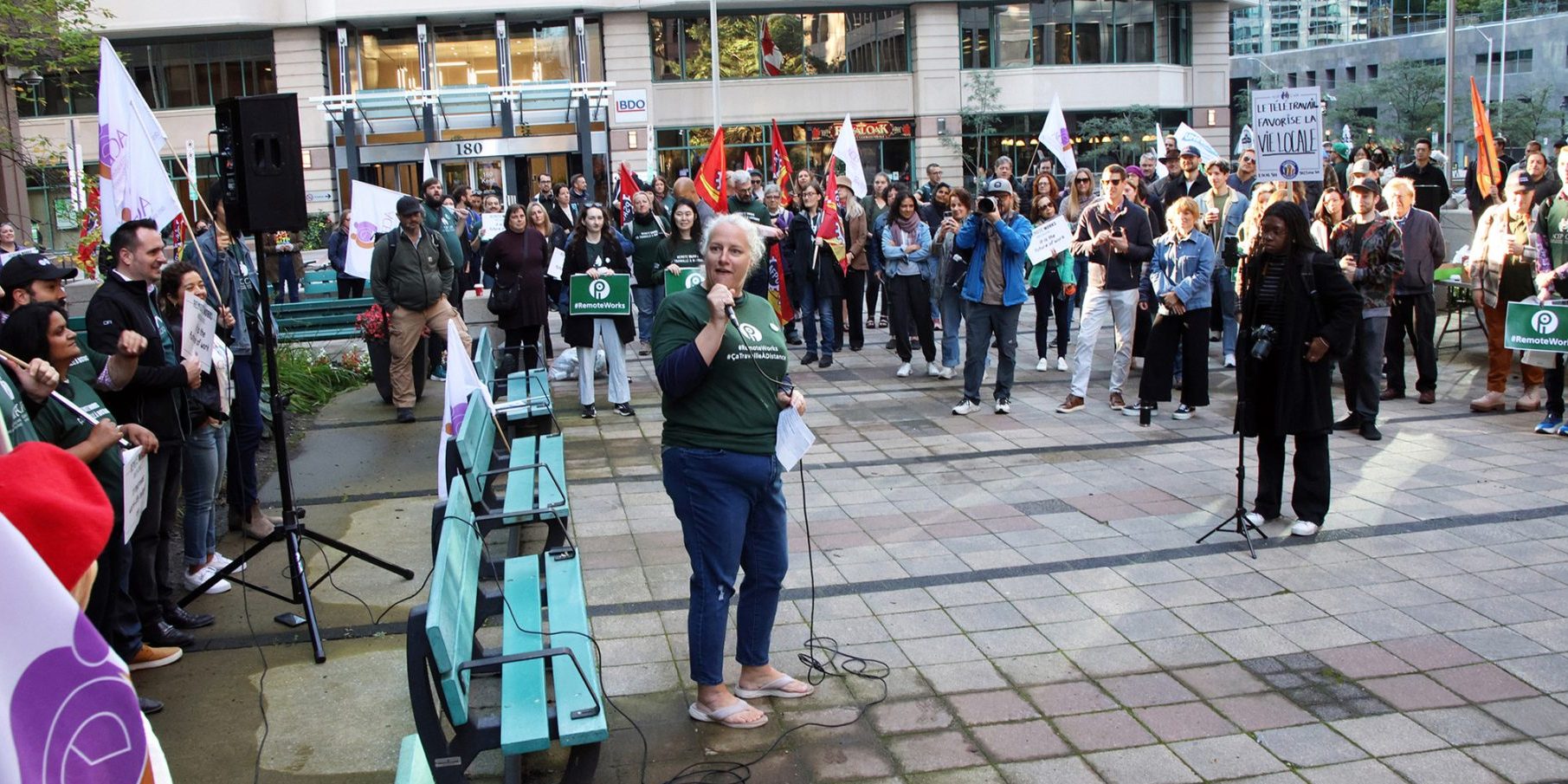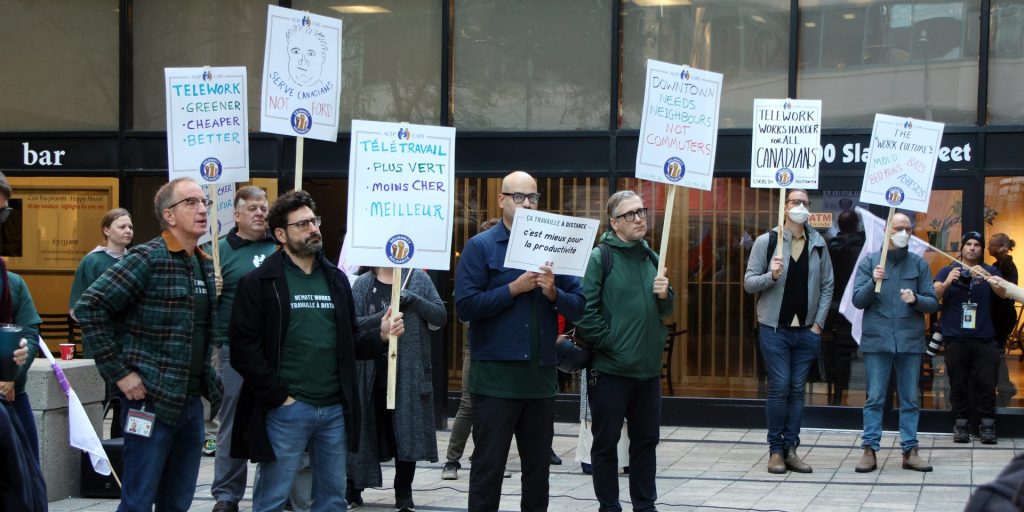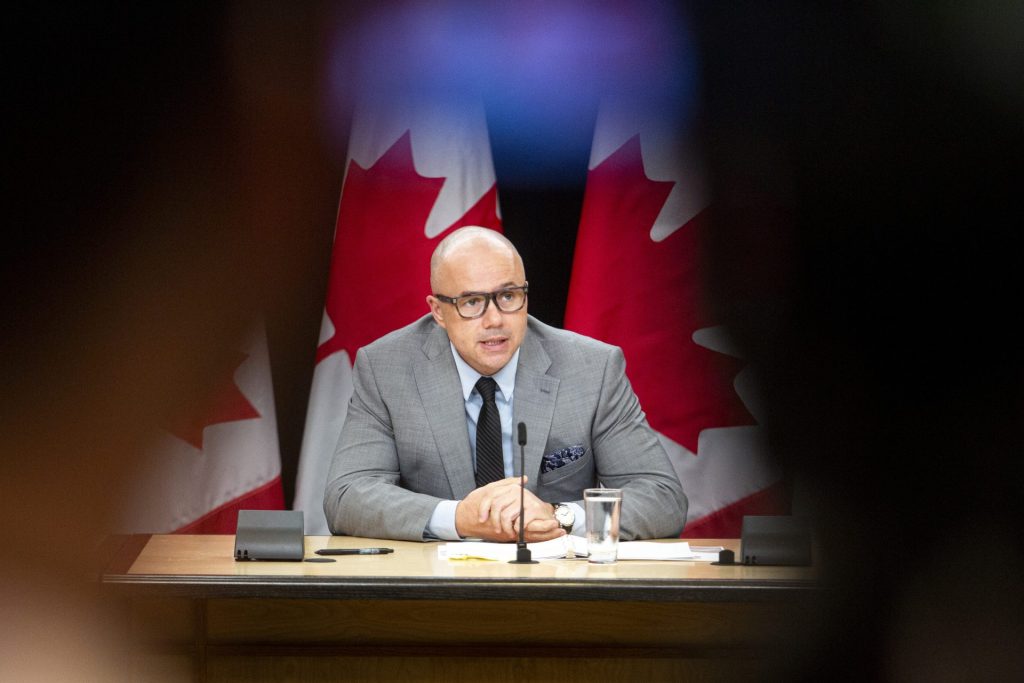Is the public service ready for a big Trump policy shift?

Donald Trump’s chaotic American presidency and trade war with Canada are triggering a policy shift not seen in decades—one that will spill over into the public service, which many fear isn’t equipped to handle it without major reform.
Trump’s trade shocks have dampened Quebec sovereignty, ignited a wave of national unity, and now business and political leaders are racing to recalibrate Canada’s relationship with an increasingly combative and isolationist Trump administration.
This push for a more autonomous and resilient Canada could reshape the way government is organized and managed on a scale not seen since the Chrétien government’s 1995 Program Review, driven by a fiscal crisis so severe the Wall Street Journal called Canada the “banana republic of the north.”
The government cut more than 50,000 jobs in that overhaul. Back then, Canada was embracing free trade, globalization, and deepening U.S. ties. Now, as Trump upends that order, Canada is being forced to adapt once again.
At the same time, Trump’s ruthless reduction of the U.S. bureaucracy has Canadian public servants on edge, but experts say his scorched-earth tactics won’t play out in Canada.
“[Trump’s] going to undo a lot of things the public sector has been doing for years, and I don’t think Canada can ignore it,” says Donald Savoie, a leading public administration academic, who has long called for public-service reform. “I don’t think there’s an appetite to go as far as Trump, but we’ll have to move in that direction.”
American politics have always influenced Canada, says Alasdair Roberts, a professor at the University of the University of Massachusetts Amherst’s School of Public Policy. What Trump and Elon Musk are doing will create an “echo effect,” especially if the Conservatives take power, but with a more “modulated approach.”
The crisis has become a catalyst to tackle Canada’s productivity, infrastructure, and pipeline problems. But aside from a handful of academics, no one is asking whether the “creaky, bloated public service”—built for another era—has the capacity to handle the shift, says former clerk of the Privy Council Michael Wernick.
“You can’t be resilient, agile, and effective in the 2020s with a public service built for the 2000s,” says Wernick, the Jarislowsky chair of public administration at the University of Ottawa.
So far, the only focus is on cutting the size of the public service. No one is talking about reforming it.
Beware the early trophies
Wernick doesn’t expect Canada will experience “Musk mayhem” or Argentina’s President Javier Milei’s chainsaw approach to cutting red tape and bureaucracy.
But the next prime minister will “be looking for early trophies.” That will likely mean across-the-board spending cuts and attrition, two of the most common tools governments use to cut spending. It’s the “most foolish and short-sighted way,” he says.

Wernick is in the growing camp calling for a strategic review, as in 1995, so the government can take stock of what government should be doing, what actually works, and stop what doesn’t. It takes political courage to make choices, he says.
That review would help government decide whether it needs to reorganize, merge, close or create departments better suited to today’s world.
But the inner workings of the public service and how it manages itself needs fixing, too. The public service has faced mounting criticism for its struggles to execute and deliver. The Liberal government’s answer: more money and more people. But adding 100,000 to the payroll hasn’t solved the problem.
Today’s public service must be able to deliver amid uncertainty—whether it’s a new bird flu outbreak, wildfires, or trade wars, says Wernick.
When agencies like the RCMP, Coast Guard, or border services fall short on security, and government procurement is slow and cumbersome, it hampers the capacity to implement policies. It’s not just a shortage of key skills but also outdated processes, rules, and systems that bog things down.
The obstacles
Roberts is a Canadian who saw Canada’s sovereignty crisis with the U.S. coming. He wrote a book about it— The Adaptable Country, published last September. Canada won’t survive the turmoil in the U.S. if the federal government can’t adapt to change, he warns.
To survive, a country has to reset priorities, embrace new ideas, and overhaul institutions, he argues. But Canada has been slow. It reacts instead of planning ahead and struggles to turn ideas into action.
Short-term politics, election-driven agendas, a fraying public sphere, and weak federal-provincial dialogue all stand in the way. So does the state of the public service.
But a strategic review and department reshuffling won’t fix how government runs. That needs reform, too, he says.
After decades of piling on rules, controls, and oversight—without clearing out the dead weight—government has become too slow and risk-averse.
“A country cannot be adaptable if its public service is incapable of taking new ideas and translating them into action efficiently, Roberts warns.
A jolt Canada could use?
A strategic review, however, is a far cry from Musk’s unfettered blast of reforms to slash the bureaucracy, which critics call illegal and an assault on democracy.
With the stroke of a pen, Trump is shutting departments, cutting jobs, freezing hiring, politicizing careers, dangling buyouts and forcing federal workers back to the office.
Trump’s back-to-the-office order for more than two million workers is a gut punch for Canada’s public servants who are fiercely resisting their own government’s mandate to return three days a week. Federal unions here launched a national campaign to fight for remote work just as Trump’s five-day-a-week directive landed. But that fight is shifting, too, as public servants wonder whether they will have jobs at all before too long.
Musk is using the sledgehammer approach he took at Twitter. His squad of staffers from DOGE, his Department of Government Efficiency, has descended on federal departments and demanded access to payment systems and databases. He boasted last week about “feeding USAID into the woodchipper.”

Tasked by Trump with slashing government spending and regulation, Musk is pushing an “AI First” overhaul of U.S. departments, an idea that is resonating here in Canada, which is still stumbling toward its “Digital First” agenda.
Musk envisions a Government Services Administration running like a startup, automating tasks and centralizing data.
AI will be a game changer for the overhaul needed for the public service, says Ian Lee, an associate professor at Carleton University’s Sprott School of Business. It will be key to rethinking jobs, streamlining work, and cutting time wasted on routine tasks. AI can slash costs, analyze complex data, predict trends, and inform policy decisions.
“I think this will be a downsizing much bigger than Chrétien’s historic cuts in 1995,” Lee predicts. “Back then, we didn’t have AI, and we didn’t have a U.S. president shooting tweets at us every day.”
Lee says the government has to find massive significant savings to satisfy Trump’s demands for border security and to meet NATO’s defense spending target, set to rise to three per cent of GDP. That could cost over $90-billion a year.
But the idea of a tech-driven shakeup—led by someone unafraid to break things and rethink government—might be the jolt Canada needs.
Other senior bureaucrats agree.
‘People will be screaming bloody murder’
Alex Benay supports the concept of Musk’s AI-first strategy but not the human costs of his tactics.
“We should be striving for a zero-bureaucracy government in Canada by putting our national AI capabilities to the test in our public sectors first,” he said last week in a post he specified was a personal view, not an official position as the associate deputy minister at Public Services and Procurement Canada.

Benay is a former CIO once dubbed Canada’s “disruptor-in-chief.”
The government is quietly studying public-service productivity through a working group that will examine technology and AI. But that’s not enough, Lee argues.
He thinks what’s needed is a “super-charged Glasco Commission”—the 1960s royal commission on government organization. A small, fast-moving blue-ribbon panel of public- and private-sector experts—including a disruptor—needs to draft a plan to overhaul the public service and be ready for the next government’s first mandate
“People will be screaming bloody murder. But we’re in this crisis now, having to respond to Trump, the demands he’s making, as well as AI changing everything in government. Nothing can stop that train. They need money for border and defense spending, and there’s going to be a huge downsizing coming.”
So far, none of the Liberal leadership contenders or Conservative Leader Pierre Poilievre (Carleton, Ont.) has talked about a strategic review or public-service reforms to ready the federal workforce for a new world order.
Poilievre has said he will cut the public service by attrition—not replacing those who retire, leave, or quit—and through the “powerful mathematics of attrition, we will reduce the morbidly obese back-office bureaucracy.”
But that math doesn’t work, says Wernick. The savings are too small. Productivity takes a hit. And managers have no control over selecting talent or ensuring the right people are in the right jobs.
“You cannot solve your fiscal problem by cutting the public service. The arithmetic doesn’t work. So, where the politicians are not being honest with people is: we need more revenue,” he says.
Governments, however, want to move fast. Strategic reviews take time.
“If you want a serious overhaul or renovation, you need two years, two budgets, and a lot of help to figure out what the federal government should look like by the end of your first mandate in 2029.”
This article was first published on Policy Options on Feb. 13, and republished with permission. Kathryn May is a reporter and the Accenture fellow on the Future of the Public Service, providing coverage and analysis of the complex issues facing Canada’s federal public service for Policy Options.
The Hill Times





 LICENSING
LICENSING PODCAST
PODCAST ALERTS
ALERTS













